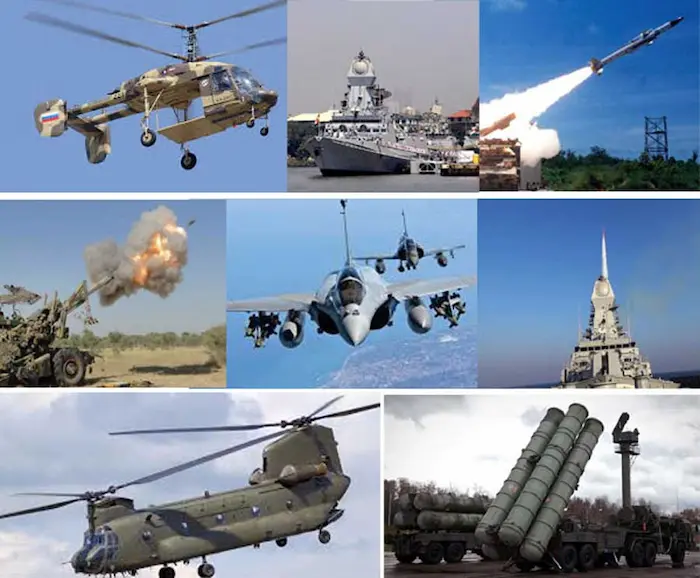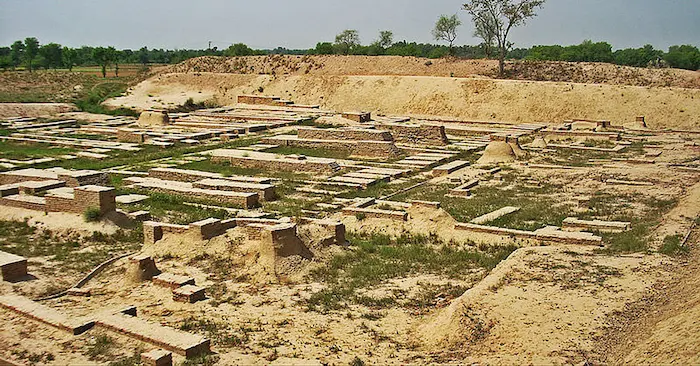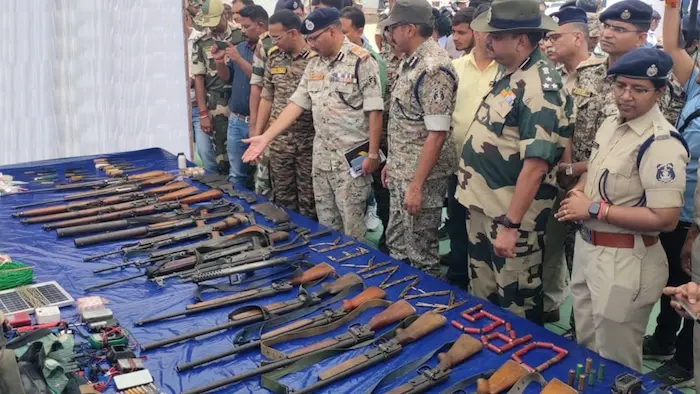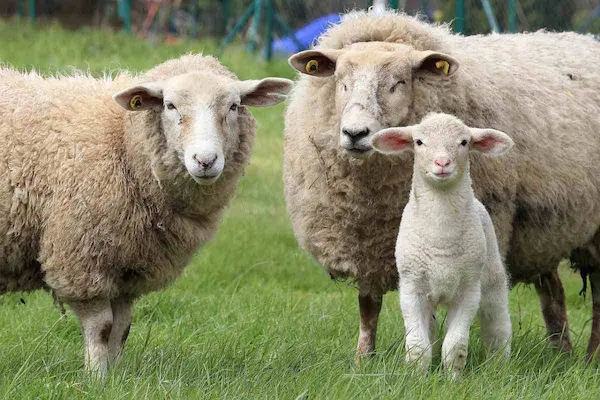1. India’s EV Localisation Policy: Balancing Imports and Industrial Growth – Economy

Why in News?
The Ministry of Heavy Industries has issued guidelines under the Scheme to Promote Manufacturing of Electric Passenger Cars in India — a major move to advance the country’s EV sector.
Key Highlights of the Policy
Reduced Customs Duty
- Duty on fully built electric cars (CBUs) reduced from 70–100% → 15%
- Applicable for EVs priced above $35,000
Investment Mandate
- Manufacturers must invest minimum ₹4,150 crore in India to avail the benefit
Domestic Value Addition (DVA)
- 25% DVA within 3 years
- 50% DVA within 5 years
Duration
- Policy valid for 5 years
Objectives of the Policy
Balance affordability of EVs for Indian consumers
Promote domestic manufacturing and industrial growth
Reduce dependence on imports
Align with India’s climate goals and green mobility vision
Current Scenario
- EVs accounted for 7.8% of total vehicle sales in FY 2025
- India aims to accelerate EV adoption in line with net-zero targets and reducing oil import dependence
Potential Benefits
Greater consumer access to affordable EVs
Attract FDI in EV sector
Boost local job creation through manufacturing
Encourage global players to set up production units in India
Concerns & Criticism
Without core technology transfer, India may become an assembly hub, not a manufacturing leader
Potential stalling of innovation and domestic R&D
Limited domestic skill development if foreign firms dominate value chain
Way Forward
1. Build strong domestic supply chains — batteries, motors, power electronics
2. Foster indigenous R&D and IP creation
3. Incentivise technology partnerships with global leaders
4. Link EV localisation with climate commitments and energy security goals
Conclusion
India’s EV localisation policy reflects a strategic attempt to balance short-term market growth with long-term manufacturing capabilities. However, ensuring technology transfer, promoting innovation, and building domestic capacities are vital for achieving true self-reliance and sustainable growth in the EV sector.
Exam Connect – Possible Questions
Prelims
1. Under India’s new EV localisation policy, what is the minimum domestic value addition (DVA) required after five years to avail reduced customs duty?
A.15%
B. 25%
C. 50%
D. 75%
Answer: C. 50%
2. The reduced customs duty of 15% under the EV localisation scheme is applicable to EVs priced above:
A. $25,000
B. $30,000
C. $35,000
D. $40,000
Answer: C. $35,000
3. The Ministry responsible for introducing the EV localisation policy is:
A. Ministry of Commerce & Industry
B. Ministry of Road Transport & Highways
C. Ministry of Heavy Industries
D. Ministry of Environment, Forest & Climate Change
Answer: C. Ministry of Heavy Industries
Mains
1. Discuss the objectives and key provisions of India’s EV localisation policy. How can this policy contribute to India’s goal of self-reliance in the electric vehicle sector?
2. Critically analyse the challenges associated with the EV localisation policy, particularly in the context of technology transfer and domestic innovation. Suggest measures to ensure long-term sustainable growth in India’s EV manufacturing ecosystem.
3. “India must balance climate commitments with industrial growth while promoting the EV sector.” Elaborate with reference to recent policy initiatives.
2. Defence Production in India Receives a Fillip – Defence & Security

Why in News?
The recent military operation Operation Sindoor (May 2025), a strategic strike against Pakistan, has reignited focus on India’s defence sector.
- Operation boosted defence sector confidence, especially for private companies and MSMEs involved in defence manufacturing.
- Defence stocks surged 21%, outperforming the market (Nifty50 +3.1%).
- Sustained momentum: Stocks rose an additional 5.4% the following week, despite a 0.5% decline in Nifty50.
Significance of Growth in Defence Production and Exports
Enhances Self-Reliance
- Defence production hit a record ₹1.3 lakh crore in FY24.
- Reduced dependence on defence imports → aligns with Atmanirbhar Bharat vision.
Boosts Economic & Strategic Strength
- Defence exports have doubled since FY20, now exceeding ₹20,000 crore.
- FY25 export target set at ₹25,000 crore (goal).
- Expanding India’s footprint in global defence markets → strategic leverage.
Encourages Innovation & Industry Growth
- Continuous double-digit growth in defence production since FY22.
- Drives investment in defence R&D, spurring innovation in both public & private sectors.
Contributions of Private Companies & MSMEs
Private Sector’s Growing Role
- Private share of defence production: ~20% (FY17) → ~24% (FY25).
- Companies like Paras Defence & Space Technologies emerging as key players.
Leadership in Defence Exports
- Private firms dominate export of small arms, protective gear, etc.
- Majority of export authorisations granted to private players.
MSMEs as Key Component Suppliers
- MSMEs supply critical components & subsystems to the defence industry.
- Procurement from MSMEs in FY25: ₹13,000 crore, doubling the target.
- Cumulative MSME supply between FY18–FY20: ~₹9,000 crore.
Timeline of Defence Production Growth
| Timeline | Production Trend |
|---|---|
| Pre-pandemic | -2.5% contraction |
| Post-pandemic | Consistent double-digit growth |
| By Dec 2024 | Approaching ₹1.6 lakh crore target for FY25 |
Key Government Initiatives
1. Promoting Domestic Manufacturing
- Target of ₹1.6 lakh crore for FY25.
- Policies aligned with Defence Acquisition Procedure (DAP), Positive Indigenisation Lists.
2. Supporting MSMEs
- Public procurement targets to ensure steady flow of orders to MSMEs.
- FY25 procurement > double the initial target.
3. Encouraging Private Sector Participation
- Policy reforms to promote private sector entry in defence manufacturing & exports.
- Simplified licensing & procurement processes.
Way Forward
Enhance Technology Upgradation & Innovation
- Greater investment in R&D.
- Strengthen public-private partnerships to develop cutting-edge technologies → e.g. AI, robotics, hypersonics.
Strengthen MSME Integration & Export Support
- Expand financial & policy support for MSMEs → scale up quality & capacity.
- Create dedicated export facilitation mechanisms.
- Explore new markets through bilateral & multilateral defence cooperation.
Conclusion
India’s defence sector is witnessing a major transformation — driven by strategic necessity, economic opportunity, and the Atmanirbhar Bharat vision.
A balanced focus on domestic capacity building, innovation, and global competitiveness will be key to sustaining this momentum.
Exam Connect – Possible Questions
Prelims
1. What was the recorded value of India’s defence production in FY24?
A. ₹80,000 crore
B. ₹1.3 lakh crore
C. ₹1.6 lakh crore
D. ₹2 lakh crore
Answer: B. ₹1.3 lakh crore
2. Which sector contributes the largest share of India’s defence exports?
A. DRDO laboratories
B. Public sector undertakings (PSUs)
C. Private companies
D. Ordnance Factories
Answer: C. Private companies
3. MSME procurement target in FY25 was doubled to approximately:
A. ₹5,000 crore
B. ₹8,000 crore
C. ₹10,000 crore
D. ₹13,000 crore
Answer: D. ₹13,000 crore
Mains
1. Highlight the recent trends in India’s defence production and exports. What factors are driving this growth, and what are the implications for national security and economic development?
2. Discuss the role of private companies and MSMEs in India’s evolving defence manufacturing ecosystem. What challenges do they face, and how can the government support their greater integration?
3. Examine the strategic significance of promoting indigenous defence production in the context of India’s changing security environment.
3. Evidence of Pre-Harappan Human Presence Discovered in Rann of Kutch – History & Culture

Why in News?
Researchers from IIT Gandhinagar have uncovered evidence of human habitation in the Great Rann of Kutch dating back 7,000–7,500 years ago — about 5,000 years before the Harappan civilization.
- Early inhabitants believed to be coastal hunter-gatherers.
- Carbon dating of shell samples → 5,000–5,500 years older than Harappan artifacts.
- Suggests a diverse diet and early human adaptation to coastal environments.
Geographic Context
Khadir Island
- Located in Great Rann of Kutch, Gujarat.
- Near prominent Harappan site: Dholavira.
- In prehistoric times, Khadir Island was surrounded by water due to higher sea levels.
Discovery Site
- Near Bambhanka, about 1 km from Dholavira.
- Initial remains uncovered in 2016.
Key Archaeological Findings
Habitation Evidence
- House complexes, broken potsherds, marine shells.
- Wall remnants built with random rubble masonry.
Shell Deposits
- 30–40 cm thick shell deposit discovered on a hillock.
- Noted earlier by geologist Arthur Beavor Wynne in 1872.
Dietary Practices
- Consumption of shellfish evident from broken shell middens.
- Likely consumed plants and fruits, though no plant remains recovered yet.
Stone Tools
- Flakes and cores made of chert and agate.
- Indicates sophisticated tool-making skills.
Cultural and Trade Links
Non-local Materials
- Tools made from stones sourced from Las Bela (Pakistan) and coastal Oman.
- Points to early long-distance trade/exchange networks.
Mobility & Cultural Connections
- Evidence suggests high mobility of hunter-gatherer groups.
- Interaction with other prehistoric coastal communities across the Arabian Sea region.
Significance of the Discovery
Extends timeline of human presence in the region far before the Harappan era.
Offers new insights into pre-Harappan lifeways — coastal adaptation, diet, mobility.
Highlights early maritime links and cultural exchanges across a broader region.
Adds valuable data to studies of climate change and sea-level fluctuations in ancient times.
Conclusion
The findings from the Great Rann of Kutch reveal that coastal hunter-gatherer communities thrived in the region thousands of years before urban Harappan civilization. Their adaptive strategies, mobility, and early trade networks offer important clues about the evolution of human societies in the northwestern Indian subcontinent.
Exam Connect – Possible Questions
Prelims
1. The recently discovered pre-Harappan site in the Great Rann of Kutch is located near which Harappan city?
A. Lothal
B. Surkotada
C. Dholavira
D. Rakhigarhi
Answer: C. Dholavira
2. The stone tools discovered in the Rann of Kutch site were primarily made of:
A. Basalt
B. Granite
C. Chert and Agate
D. Obsidian
Answer: C. Chert and Agate
3. Evidence of early trade links from the Rann of Kutch site points to connections with which of the following regions?
- Las Bela (Pakistan)
- Coastal Oman
- Mesopotamia
Choose the correct answer:
A. 1 and 2 only
B. 2 and 3 only
C. 1 and 3 only
D. 1, 2, and 3
Answer: A. 1 and 2 only
Mains
1. Discuss the recent discoveries of pre-Harappan human presence in the Great Rann of Kutch. What do these findings reveal about early human adaptation and mobility?
2. How do archaeological findings such as those from the Rann of Kutch enhance our understanding of prehistoric trade networks and cultural exchanges in the Indian subcontinent?
3. Evaluate the significance of studying pre-Harappan coastal settlements in the context of understanding the evolution of urban civilizations like the Harappan culture.
4. Stratospheric Aerosol Injection (SAI) – Environment

Why in News?
A recent study published in Earth’s Future journal proposes a novel, cost-effective approach to Stratospheric Aerosol Injection (SAI) — a potential method for mitigating climate change.
- Technique could become more practical despite ethical and scientific opposition.
- Concept inspired by cooling effects of volcanic eruptions.
What is Stratospheric Aerosol Injection (SAI)?
Definition:
SAI is a form of geoengineering that involves injecting tiny reflective particles into the stratosphere to reflect sunlight back into space and cool the planet.
Mechanism:
- Sulfur dioxide (SO₂) is injected into the stratosphere.
- SO₂ forms sulfate aerosols → reflect sunlight → reduce global temperatures.
Inspiration:
- Based on observations of volcanic eruptions (e.g. Mount Pinatubo, 1991), which temporarily cooled the Earth by about 0.5°C due to sulfate aerosol formation.
What are Aerosols?
Definition:
Aerosols are tiny solid or liquid particles suspended in air or gas.
Types:
- Natural: Fog, volcanic gases, dust.
- Artificial: Smoke, industrial pollution.
Classification:
- Primary aerosols: Emitted directly (e.g. volcanic ash).
- Secondary aerosols: Formed from precursor gases (e.g. SO₂ → sulfate aerosols).
Size:
- Range: Few milli-micrometers to about 1 micrometer.
- Particles smaller than 0.1 micrometer = Aitken nuclei.
Visible Forms:
- Smoke, smog, haze, dust.
Potential Benefits of SAI
Rapid cooling potential — Can offset warming on relatively short timescales.
Lower cost compared to other climate interventions.
Buys time for transitioning to low-carbon economies.
Concerns & Criticism
Ethical concerns — Intervening in natural climate systems.
Uncertain side effects — Could alter global rainfall patterns, impact monsoons.
Temporary solution — Does not address the root cause: GHG emissions.
Termination shock — Abrupt halting of SAI could cause rapid warming rebound.
Governance issues — No clear international regulatory framework for SAI.
Way Forward
Conduct more scientific research to understand long-term impacts.
Develop international governance structures to regulate any future deployment.
Treat SAI as a last resort, not a replacement for mitigation efforts (carbon reduction).
Continue investing in adaptation and renewable energy transition.
Conclusion
While SAI offers an intriguing possibility for temporary climate intervention, it remains highly controversial. The scientific community urges caution and stresses that such methods should complement, not replace, the core solution of reducing greenhouse gas emissions.
Exam Connect – Possible Questions
Prelims
1. Stratospheric Aerosol Injection (SAI) aims to mitigate climate change by:
A. Removing carbon dioxide from oceans
B. Increasing cloud cover at the surface
C. Reflecting sunlight back into space
D. Capturing methane from the atmosphere
Answer: C. Reflecting sunlight back into space
2. Which gas is commonly used in Stratospheric Aerosol Injection to form sulfate aerosols?
A. Carbon dioxide
B.Nitrogen dioxide
C. Sulfur dioxide
D.Methane
Answer: C. Sulfur dioxide
3. The cooling effect of which volcanic eruption inspired modern research into SAI?
A. Mount Etna
B. Mount Tambora
C. Mount Vesuvius
D. Mount Pinatubo
Answer: D. Mount Pinatubo
Mains
1. What is Stratospheric Aerosol Injection (SAI)? Critically examine its potential role in addressing climate change and the associated ethical and governance challenges.
2. Discuss the scientific basis of Stratospheric Aerosol Injection. What are the possible unintended consequences of its large-scale deployment?
3. Examine the pros and cons of geoengineering techniques such as Stratospheric Aerosol Injection in the context of India’s climate policy and vulnerability to climate change impacts.
5. Intensifying Anti-Naxal Drive, Sustaining Welfare Focus – Defence & Security

Why in News?
In its first year, the current government has intensified its campaign against Left-Wing Extremism (LWE) while expanding key welfare schemes in Naxal-affected regions.
- Target: Eliminate LWE by March 31, 2026.
- Simultaneous push for military action + development & welfare to achieve lasting peace.
Key Takeaways
Strengthening Security Operations
- Operation Black Forest dismantled a major Maoist stronghold.
- Security forces have gained ground in Chhattisgarh, Jharkhand, Odisha.
Welfare Focus Enhanced
- Ayushman Bharat expanded to cover all citizens aged 70+.
- PMAY-G target: build 2 crore additional rural houses.
Major Gains in Maoist Strongholds
Chhattisgarh’s Tri-Junction Focus
- Target area: Bijapur-Sukma-Dantewada.
- Strategy: Use of forward operating bases + improved road connectivity.
Operation Black Forest
- Launched: April 21, 2025.
- Joint effort: CRPF + Chhattisgarh Police.
- Outcomes:
- 54 Naxalites arrested.
- 84 surrenders.
Surge in Maoist Casualties
- 209 Maoists killed in Chhattisgarh in first 5 months of 2025 (exceeding 2024 total).
- Key achievement: elimination of Basavaraju, CPI Maoist general secretary.
Persisting Challenges
Despite gains, Maoists continue to execute ambushes, indicating retained operational capacity.
The insurgency remains active in remote forest areas where governance and development are still weak.
Welfare & Development Initiatives
Ayushman Bharat Expanded
- Now includes all citizens aged 70 and above.
- Seeks to close the health insurance gap for elderly, especially in rural/Naxal-hit areas.
PMAY-G Target
- 2 crore additional rural houses planned.
- Substantial funds already released to implement housing in affected areas.
Integrated Approach: The Way Forward
Maintain consistent military pressure to degrade insurgent capabilities.
Improve governance and rule of law in affected districts.
Focus on infrastructure, roads, health, education, and livelihood opportunities.
Engage local communities in confidence-building and rehabilitation.
Conclusion
A successful counter-LWE strategy must combine hard power with development and welfare. Sustaining this dual focus will be critical to achieving the target of eliminating LWE by 2026 and bringing durable peace to affected regions.
Exam Connect – Possible Questions
Prelims
1. The government aims to eliminate Left-Wing Extremism (LWE) by which target date?
A. December 31, 2025
B. March 31, 2026
C.June 30, 2027
D. December 31, 2026
Answer: B. March 31, 2026
2. Which of the following operations was recently launched to target Maoist strongholds in Chhattisgarh?
A. Operation Green Hunt
B. Operation Sunrise
C. Operation Black Forest
D. Operation Thunderbolt
Answer: C. Operation Black Forest
3. The Ayushman Bharat scheme has recently been expanded to cover:
A. Citizens below the poverty line
B. Women only
C. All citizens aged 60 and above
D.All citizens aged 70 and above
Answer: D. All citizens aged 70 and above
Mains
1. Discuss the recent trends in India’s anti-Naxal strategy. How has the government balanced security operations with welfare initiatives in Left-Wing Extremism affected areas?
2. Operation Black Forest and other recent measures indicate progress against LWE in India. What challenges still remain, and what further steps are required to ensure long-term peace in Naxal-affected regions?
3. “Eliminating Left-Wing Extremism requires not just military operations but also inclusive development.” Critically examine this statement with reference to current government initiatives.
6. Digital Postal Index Number (DIGIPIN) – Governance

Why in News?
The Government of India has recently launched DIGIPIN, a geo-coded digital address system aimed at improving location accuracy and address identification nationwide.
- Designed to support precise mapping, delivery services, emergency response, and public service delivery.
- Developed by: Department of Posts + IIT Hyderabad + National Remote Sensing Centre (NRSC).
What is DIGIPIN?
A unique digital address system for India.
Uses GNSS data (Global Navigation Satellite System) for high-precision geo-coding.
Provides a 10-character alphanumeric code to represent a specific geographic location.
Accessible via:
- India Post online portal
- Compatible with GPS-enabled devices.
Technical Details
Code Format:
- Example: 39J-53M-TJF9
- Maps an area of approx. 4×4 square meters.
Nature of the System:
- Open source and interoperable.
- Privacy-focused → does not store personal data.
Coverage:
- Urban, rural, forest, oceanic regions.
- Designed to provide location identity even where traditional addresses do not exist.
How to Access DIGIPIN?
- Retrieve via India Post’s online services.
- Users can generate their location-specific DIGIPIN easily.
Significance & Applications
Precise Mapping
- Standardised location identification across the country.
Enhanced E-commerce & Logistics
- Supports last-mile delivery in remote or difficult-to-access areas.
Improved Emergency Response
- Critical for disaster management, health emergencies, and police response.
Public Service Delivery
- Enables precise targeting of services such as postal delivery, utilities, and government schemes.
Inclusion of Remote Areas
- Digitally integrates regions lacking a formal address structure into national mapping efforts.
Conclusion
DIGIPIN represents an important step toward building a digital address ecosystem in India, supporting a wide range of governance, commercial, and civic functions.
Its adoption can improve service delivery, governance efficiency, and citizen inclusion, especially in underserved areas.
Exam Connect – Possible Questions
Prelims
1. The Digital Postal Index Number (DIGIPIN) was developed by the Department of Posts in collaboration with which two institutions?
A. IIT Bombay & ISRO
B. IIT Hyderabad & National Remote Sensing Centre
C. IIT Delhi & Survey of India
D. IIT Madras & National Informatics Centre
Answer: B. IIT Hyderabad & National Remote Sensing Centre
2. DIGIPIN assigns a unique code to an area of approximately:
A. 10×10 square meters
B. 1×1 square meter
C. 4×4 square meters
D. 8×8 square meters
Answer: C. 4×4 square meters
3. Which of the following is NOT a feature of DIGIPIN?
A. Open source
B. Stores personal data
C. Privacy-focused
D. Interoperable
Answer: B. Stores personal data
Mains
1. What is the Digital Postal Index Number (DIGIPIN)? How can it enhance governance and public service delivery in India?
2. Discuss the significance of geo-coded digital address systems like DIGIPIN for improving inclusivity and access in remote and underserved regions of India.
3. Explain how DIGIPIN can contribute to the efficiency of e-commerce, emergency response services, and targeted welfare delivery.
7. India’s First Gene-Edited Sheep Thrives at Six Months – Science and Technology

Why in News?
A team led by Professor Riyaz Ahmad Shah at Sher-e-Kashmir University of Agricultural Sciences and Technology (SKUAST), Srinagar, successfully developed India’s first gene-edited sheep — a Kashmir Merino breed.
- Initially kept confidential → success confirmed after gene sequencing.
- Marks a major milestone in India’s livestock biotechnology and genetic research.
Key Takeaways
First gene-edited sheep in India → Kashmir Merino breed.
Gene-editing done using CRISPR-Cas9.
Targeted myostatin gene → increased muscle mass by ~30%.
Six months post-birth → sheep is healthy and thriving.
Opens avenues for improving livestock productivity via transgenic technologies.
Kashmir Merino: Background
Breed Development
- Origin: 1960s, Govt. Sheep Breeding and Research Farm, Reasi, Jammu.
- Cross-breeding of native breeds: Poonchi, Gaddi, Bakerwal
- exotic breed: Australian Merino.
Productivity
- 3–4 times more productive than local breeds (for wool and meat).
- Quality: Comparable to exotic fine wool breeds.
Adaptability
- Well-suited to harsh climatic conditions and disease challenges of the Kashmir Valley.
Gene-Editing Details
Technique Used:
- CRISPR-Cas9 → precise gene-editing tool.
Target Gene:
- Myostatin gene → naturally suppresses muscle growth.
- Editing this gene led to a 30% increase in muscle mass.
Significance of the Achievement
Advances livestock biotechnology in India.
Potential to enhance meat yield and meet rising demand for quality meat.
Supports nutritional security and economic growth for farmers.
Builds on prior Indian successes → gene-editing in rice.
Positions India for future innovations in agriculture and animal husbandry.
Broader Implications
- Can revolutionise breeding programs in sheep, cattle, goats, and poultry.
- Helps in developing climate-resilient, disease-resistant, and high-yielding livestock.
- Raises need for robust regulatory frameworks and ethical guidelines for gene-editing in animals.
Conclusion
India’s first gene-edited sheep signals a leap forward in livestock genomics and agricultural biotechnology. As India integrates cutting-edge science with traditional farming, such innovations will be key to sustainable agriculture, food security, and rural prosperity.
Exam Connect – Possible Questions
Prelims
1. India’s first gene-edited sheep belongs to which breed?
A. Poonchi
B. Gaddi
C. Kashmir Merino
D. Australian Merino
Answer: C. Kashmir Merino
2. The gene-editing technique used to develop India’s first gene-edited sheep was:
A. TALEN
B. ZFN
C. RNAi
D. CRISPR-Cas9
Answer: D. CRISPR-Cas9
3. The gene targeted in India’s first gene-edited sheep suppresses:
A. Wool growth
B. Muscle growth
C. Milk production
D. Disease resistance
Answer: B. Muscle growth
Mains
1. What is CRISPR-Cas9 gene-editing technology? How has its application in developing India’s first gene-edited sheep advanced the country’s livestock biotechnology?
2. Discuss the potential benefits and ethical concerns associated with the use of gene-editing technologies in animal husbandry.
3. Examine the role of gene-editing in enhancing agricultural and livestock productivity in India. What regulatory and policy measures are necessary to guide its responsible use?

